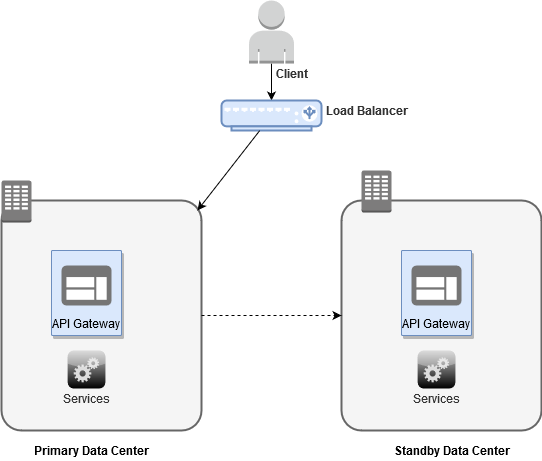What is Hot Standby Mode?
In the Hot Standby mode, there are only two data centers. Both the data centers are up, running, and symmetric. But only one of the data center is exposed to the clients to handle and process their requests. In other words, the load balancer directs traffic only to the primary data center. The secondary data center shadow-writes all the client requests, hence the data is mirrored in real time and both the data centers have identical data. When the primary data center goes down, you can expose the secondary data center to the clients in no time with minimal intervention. This is done by reconfiguring the load balancer to redirect the traffic to the secondary data center. The RPO and RTO for hot standby mode is less compared to warm and cold standby modes.
Note:
API Gateway automatically federates the following volatile data only:
1. Applications (API consumers)
2. Oauth tokens and Auth code
3. Oauth or OpenID scopes (scope mapping)
4. Application registration to the API
Other data such as APIs, and so on should be promoted to the secondary data center using CI/CD pipelines.
Set up the Cross-DC support in API Gateway in the hot standby mode using one of the following methods:
You can configure the data centers individually using a basic operation, where each data center is considered as a unit. This set up requires finer details like node name to configure the data centers at unit level. In case the configuration procedure encounters an error, it is easier to troubleshoot, because the configuration is done at unit level. You can reconfigure that data center, which causes the problem, in no time. Choose this method, if you want to configure both the data centers in your environment at a unit level.
You can configure the data centers simultaneously using a composite operation. This composite operation includes setting up the data center and establishing connection between data centers. Both the data centers are configured simultaneously, and configuring the data centers takes less time. This method requires basic details such as host name, port, and so on to configure the data center. In case the configuration procedure encounters an error, you must reconfigure both the data centers. Choose this method, if you want to configure both the data centers in your environment simultaneously.

